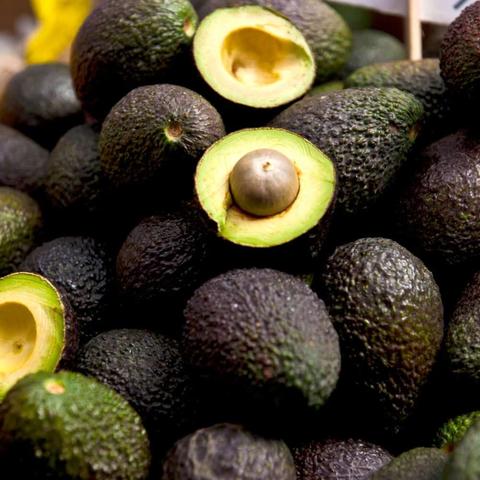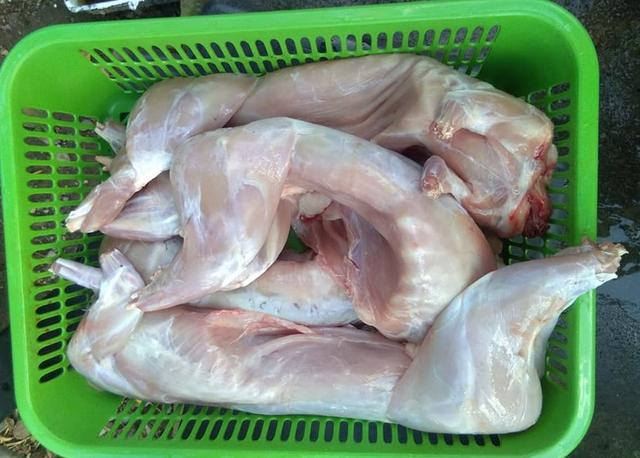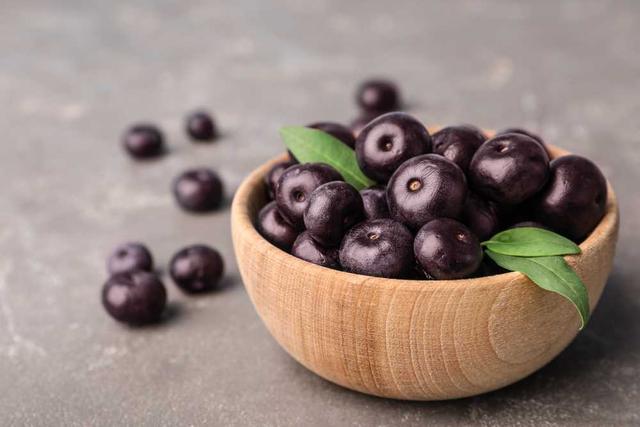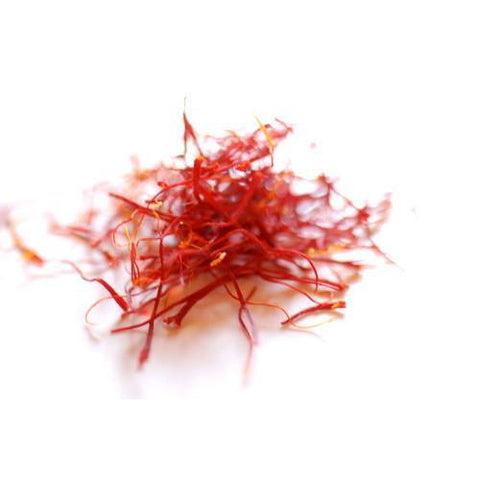
Discover the Exquisite Flavor of Saffron: Unveiling the Enigmatic Taste
1. Exploring the Flavor Profile of Saffron: What Does it Taste Like?

Saffron has a unique and distinct flavor profile that adds depth and complexity to dishes. It is known for its earthy, subtly sweet taste with a hint of bitterness. When saffron is used in cooking, it imparts a golden color and a rich flavor to various dishes.
Floral and Honey Notes
One of the notable characteristics of saffron is its delicate floral and honey notes. These flavors add a beautiful aromatic quality to the spice, enhancing the overall taste experience.
Earthy Undertones
Saffron also has earthy undertones that provide a grounding element to its flavor profile. This earthiness balances out the sweetness and adds depth to the overall taste.
Bitterness
While saffron is primarily known for its sweet and floral qualities, it also has a slight bitterness on the tongue. This bitterness adds complexity to the spice, making it more interesting and intriguing.
A Whiff of Pepper
Fresh saffron has a subtle peppery aroma that further enhances its flavor profile. This hint of pepper adds a subtle spiciness to the spice, complementing its other flavors.
In summary, saffron has an exquisite flavor profile characterized by floral and honey notes, earthy undertones, slight bitterness, and a touch of pepper. Its unique combination of flavors makes it highly sought after in culinary applications around the world.
2. Unveiling the Taste of Saffron: A Subtle Earthy-Sweet Delight
Saffron is renowned for its unique and delightful flavor profile. It offers a subtle earthy-sweet taste with a hint of bitterness that adds depth to various dishes. When used in cooking, saffron imparts a golden color and a distinct flavor that elevates the overall dining experience.
The flavor of saffron is complex, with delicate floral and honey notes that complement its earthy undertones. It has a pleasant aroma, reminiscent of sweet hay mixed with freshly mown grass, accompanied by a subtle peppery scent.
In culinary applications, saffron is used as a spice to enhance the taste of dishes or as a natural yellow dye. Its versatility allows it to be incorporated into various cuisines around the world, including Indian, Moroccan, Iranian, Spanish, Italian, and French.
When paired with pasta or grains like orzo and rice, saffron creates vibrant and visually appealing dishes. It also pairs exceptionally well with seafood and poultry, adding an extra layer of flavor complexity.
To extract the full flavor potential of saffron, it is often steeped in cream, broth, custard, or milk. This infusion process enhances both the taste and color of sweet and savory creations.
The unique taste profile of saffron comes at a price due to its limited supply and labor-intensive harvesting process. Saffron crocus blooms for only one week each year, producing just three threads per flower. Harvesting saffron requires delicate hand-picking when the flowers are still closed to protect the fragile threads inside.
Despite its high cost, saffron’s remarkable taste makes it worth every penny for those who appreciate its distinctive flavor profile. Whether used sparingly or generously in recipes, saffron adds an unparalleled touch to culinary creations that cannot be replicated by any other spice.
3. The Sensory Experience of Saffron: Discovering its Unique Flavor
Saffron offers a sensory experience like no other spice. Its unique flavor profile combines earthiness, sweetness, and subtle floral notes that create a truly distinct taste. When used in cooking, saffron adds depth and complexity to dishes, making it a prized ingredient in many cuisines.
One of the most remarkable aspects of saffron is its aroma. Fresh saffron has a scent reminiscent of sweet hay mixed with freshly mown grass, with a hint of pepper. This aromatic quality enhances the overall sensory experience of using saffron in recipes.
In terms of taste, saffron starts with a slightly bitter note on the tongue that quickly gives way to delicate floral and honey undertones. This combination of flavors creates a harmonious balance that elevates the overall taste profile of dishes.
When incorporating saffron into recipes, it’s important to use it sparingly as a little goes a long way. The threads are typically steeped in liquid (such as cream, broth, custard, or milk) to extract their flavor and color. This method allows the saffron to infuse the dish with its unique characteristics without overpowering other ingredients.
Overall, the sensory experience of saffron is truly one-of-a-kind. Its distinct flavor and aroma make it an essential spice for those looking to elevate their culinary creations and explore new taste sensations.
Some ways to fully appreciate the sensory experience of saffron include:
– Steeping saffron threads in warm milk or cream before adding them to desserts like rice pudding or custards.
– Infusing broths or sauces with saffron threads for added depth and complexity.
– Using saffron as a finishing touch by sprinkling a few threads over dishes just before serving for both visual appeal and enhanced flavor.
– Experimenting with different recipes and cuisines that highlight saffron’s unique qualities, such as paella, risotto, or traditional Persian dishes.
By embracing the sensory experience of saffron, you can unlock a world of culinary possibilities and truly appreciate why it is considered the most expensive spice in the world.
4. Unlocking the Mystery of Saffron’s Taste: A Blend of Earthiness and Floral Notes
Saffron is known for its unique flavor profile that combines earthiness with delicate floral notes. When used in cooking, saffron imparts a subtly sweet and earthy taste to dishes. The flavor starts with a tinge of bitterness on the tongue, which then gives way to delicate floral and honey notes. This combination of flavors adds depth and complexity to a variety of cuisines.
Saffron’s taste is best described as a blend of earthiness and floral notes. It has a distinct aroma that is reminiscent of sweet hay mixed with freshly mown grass, with a hint of pepper. The flavor profile of saffron is what makes it such a prized spice in culinary applications.
In addition to its culinary uses, saffron is also valued for its fragrance. Saffron extracts are often added to perfumes and fragrances to impart a unique scent. The combination of earthy and floral notes in saffron makes it a versatile ingredient that can enhance both sweet and savory dishes.
When using saffron in cooking, it’s important to use it sparingly as a little goes a long way. Most recipes call for small amounts of saffron due to its strong flavor profile. Whether used in Indian curries, Moroccan tagines, or Spanish paella, saffron adds depth and richness to dishes, making it worth the high price tag.
Overall, the taste of saffron can be described as a harmonious blend of earthiness and floral notes. Its unique flavor profile sets it apart from other spices, making it one of the most sought-after ingredients in the culinary world.
5. Saffron’s Flavor Profile Unraveled: A Subtle Sweetness with a Hint of Bitterness
Saffron’s flavor profile is characterized by a subtle sweetness with a hint of bitterness. When used in cooking, saffron imparts a unique and complex taste to dishes. The earthy and subtly sweet flavors of saffron are complemented by delicate floral and honey notes. This combination of flavors creates a rich and aromatic experience for the palate.
The taste of saffron can be described as warm, pungent, and slightly bitter. It adds depth and complexity to a variety of dishes, enhancing their overall flavor profile. Saffron pairs particularly well with seafood, poultry, grains, and pasta.
When steeped in cream, broth, custard, or milk, saffron releases its flavors and colors the dish with its signature golden hue. This method of infusion is commonly used in both sweet and savory recipes to highlight the unique characteristics of saffron.
In culinary applications, saffron is often used as a spice to flavor dishes or as a natural yellow dye. Its distinct flavor profile makes it an essential ingredient in various cuisines around the world, including Indian, Moroccan, Iranian, Spanish, Italian, and French cuisine.
Overall, saffron’s flavor profile is complex and versatile. Its subtle sweetness combined with a hint of bitterness adds depth and richness to dishes while also providing a visually appealing golden color.
6. From Earthy to Floral: Decoding the Taste of Saffron
Saffron is a spice that offers a unique flavor profile, ranging from earthy to floral notes. When used in cooking, saffron imparts a golden color and subtly sweet taste to dishes. It has a tinge of bitterness on the tongue, which then gives way to delicate floral and honey flavors. The flavor of saffron is often described as complex and multidimensional.
One way to experience the taste of saffron is by steeping it in cream, broth, custard, or milk. This method allows the flavor and color of saffron to infuse into both sweet and savory dishes. The aroma of fresh saffron is reminiscent of sweet hay mixed with freshly mown grass, with a hint of pepper.
In culinary applications, saffron is commonly used in Indian, Moroccan, Iranian, and European cuisines. It pairs well with pastas, grains, seafood, and poultry. For example, it can be added to curries in India or used in rice dishes like tahdig in Iran. In European cuisine, saffron is an essential ingredient in paella, risotto, and bouillabaisse.
The taste of saffron comes from its limited supply and labor-intensive harvesting process. Saffron crocus blooms for only one week each year, and each flower produces just three threads of saffron spice. Harvesters must pick the flowers when they are still closed to protect the fragile threads inside. It takes approximately 150 flowers to produce 1 gram of saffron and thousands of flowers to yield 1 ounce.
Despite its high price tag due to its limited availability and hand-harvesting process, a little bit of saffron goes a long way in recipes. Most recipes call for small amounts because the flavor and color of saffron are potent. When purchasing saffron, it’s important to ensure that the threads are reddish-orange in color, as yellow threads indicate the flower’s stamen.
While saffron is known for its culinary uses, it also has potential health benefits. It contains high levels of antioxidants and has been associated with improving mood, treating depression and anxiety, fighting cancer, reducing menstrual cramps or PMS symptoms, suppressing appetite, and acting as an aphrodisiac. However, scientific evidence supporting these claims is still limited.
In conclusion, saffron offers a unique taste profile that ranges from earthy to floral notes. Its limited supply and labor-intensive harvesting process contribute to its high price tag. Despite being expensive, a small amount of saffron can add depth and complexity to various dishes.
7. The Delicate Tastes of Saffron: Exploring its Subtle Sweetness and Fragrant Notes
Saffron is known for its unique flavor profile that combines subtle sweetness with fragrant notes. When used in cooking, saffron imparts a golden color and earthy taste to dishes. It has a subtly sweet flavor with a hint of bitterness that gives way to delicate floral and honey notes.
The taste of saffron is best described as earthy-sweet, with a tinge of bitterness on the tongue. It has a complex flavor profile that adds depth and richness to various dishes. The aroma of fresh saffron is reminiscent of sweet hay mixed with freshly mown grass, with a touch of pepper.
In culinary applications, saffron is used as a spice to flavor dishes or as a natural yellow dye. It is commonly used in Indian, Moroccan, Iranian, and European cuisines. In India, saffron is added to curries or used to infuse syrups for desserts. In Morocco, it brings an earthy-sweet undercurrent to dishes like Chicken Tagine. In Iran, saffron is essential in crispy rice dishes called tahdig.
Saffron pairs particularly well with pastas, grains, seafood, and poultry. It can be steeped in cream, broth, custard, or milk to infuse flavor and color into both sweet and savory dishes.
The delicate taste of saffron comes at a high price due to its limited supply and labor-intensive harvesting process. Saffron crocus bloom for only one week each year, and each flower produces just three threads of saffron. Harvesters must pick the stigmas from the flowers when they are still closed to protect the fragile threads inside.
It takes approximately 70,000 blossoms to produce one pound of saffron spice, making it a labor-intensive and time-consuming process. This scarcity and high demand contribute to saffron’s expensive price tag.
Despite its cost, saffron is highly valued for its unique flavor and color properties. Its subtle sweetness and fragrant notes make it a prized ingredient in various cuisines around the world.
8. What to Expect When Tasting Saffron: A Symphony of Earthy, Sweet, and Floral Flavors
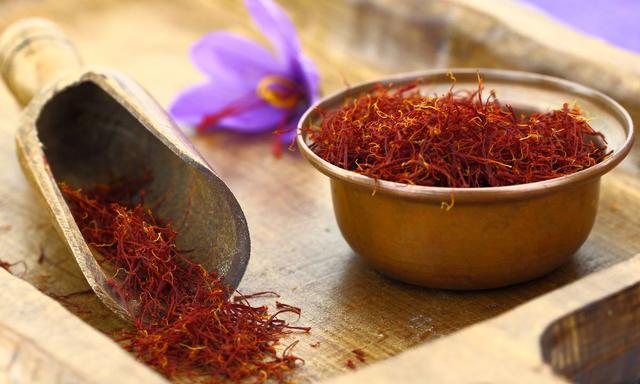
When tasting saffron, you can expect a symphony of earthy, sweet, and floral flavors. The spice has a subtle earthy-sweet flavor profile with a tinge of bitterness on the tongue that gives way to delicate floral and honey notes. It is this unique combination of flavors that makes saffron highly prized in culinary applications.
Saffron pairs particularly well with a variety of dishes, including pastas, grains, seafood, and poultry. It can be used to flavor dishes or as a natural yellow dye. In Indian cuisine, it is added to curries or used to infuse syrups for desserts. In Moroccan cuisine, it brings an earthy-sweet undercurrent to dishes like Chicken Tagine with Olives and Apricots. In Iran, saffron is an essential ingredient in tahdig, a crispy rice dish.
When using saffron in cooking, it is important to steep it in cream, broth, custard, or milk to fully impart its flavor and color. A little goes a long way with saffron, as most recipes only call for small amounts.
The reason why saffron is so expensive is due to its limited supply and the labor-intensive process of harvesting it. Saffron crocus bloom for only one week every year, and each flower produces just three threads of saffron. The spice must be hand-harvested when the flowers are still closed to protect the fragile threads inside. It takes thousands of flowers to yield just one ounce of saffron.
Despite its high price tag, saffron is worth the investment for its unique flavor profile and ability to elevate dishes with its vibrant golden color. So next time you come across a recipe that calls for saffron, don’t hesitate to give it a try and experience the symphony of flavors that this precious spice has to offer.
9. Tasting the World’s Most Expensive Spice: Understanding the Unique Flavor of Saffron
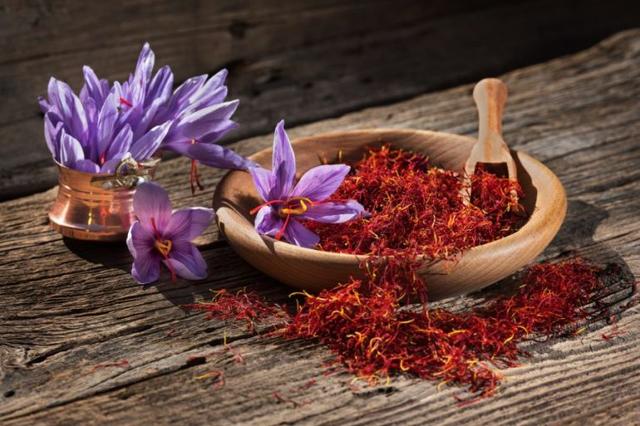
Saffron is renowned as the world’s most expensive spice, and its unique flavor is a major factor in its high price. The flavor profile of saffron is earthy, subtly sweet, and slightly bitter. It has delicate floral and honey notes that add depth to a variety of dishes.
When using saffron in cooking, it imparts a golden color to the dish along with its distinctive flavor. The reddish-brown threads of saffron are harvested from the flower known as crocus sativus, commonly referred to as the saffron crocus. Each flower produces just three threads of saffron, which must be hand-picked when the flowers are still closed to protect the fragile threads inside.
The limited supply and labor-intensive harvesting process contribute to saffron’s high cost. Saffron crocus bloom for only one week each year, and it takes approximately 150 flowers to produce just 1 gram of saffron. To yield 1 ounce of saffron, thousands of flowers are needed. This scarcity drives up the price of saffron significantly.
Despite its high price, a little saffron goes a long way in recipes due to its strong flavor. Most recipes only call for small amounts of saffron, making it more affordable than it may seem at first glance.
In conclusion, saffron’s unique flavor profile and limited supply contribute to its status as the most expensive spice in the world. Its earthy-sweet taste with floral and honey undertones adds depth and complexity to various dishes. While it may be costly, using small amounts of saffron can elevate your culinary creations and provide a truly special dining experience.
10. The Complex Taste of Saffron Revealed: A Harmonious Blend of Earthy and Honeyed Notes
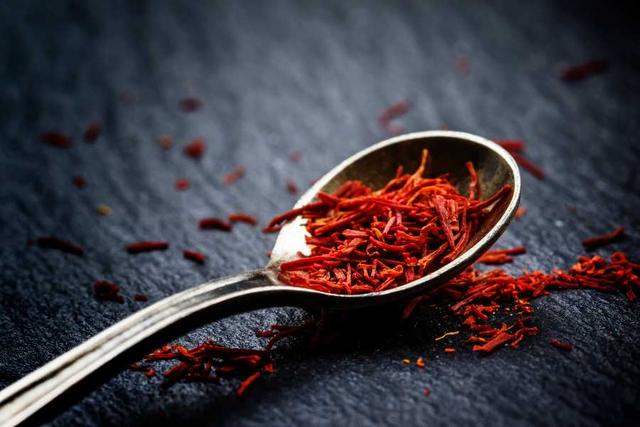
Saffron is known for its complex taste, which is a harmonious blend of earthy and honeyed notes. When used in cooking, saffron imparts a subtly sweet flavor profile to dishes, with a tinge of bitterness on the tongue. It also has delicate floral and honey undertones that add depth to the overall taste.
The earthiness of saffron comes from its natural compounds, such as picrocrocin and safranal. These compounds give saffron its distinct flavor and aroma. The honeyed notes, on the other hand, are attributed to the presence of crocin in saffron. Crocin is responsible for the golden-yellow color that saffron adds to dishes.
The combination of these flavors makes saffron a unique spice that enhances the taste of various cuisines around the world. Whether it’s used in Indian curries, Moroccan tagines, or Spanish paella, saffron brings a rich and aromatic element to dishes.
In addition to its flavor profile, saffron also has a captivating aroma. Fresh saffron smells like sweet hay mixed with freshly mown grass, with a hint of pepper. This aroma adds another layer of sensory experience when using saffron in cooking.
Overall, the complex taste of saffron is what sets it apart from other spices. Its unique combination of earthy and honeyed notes adds depth and richness to dishes, making it one of the most sought-after and expensive spices in the world.
Some possible lists related to this topic could include:
– Dishes that showcase the complex taste of saffron: This list could include recipes such as Saffron Risotto, Saffron-infused Cream Sauce Pasta, or Saffron-flavored desserts like Saffron Rice Pudding.
– Tips for cooking with saffron: This list could include suggestions on how to maximize the flavor of saffron in dishes, such as soaking the threads in warm liquid before using them or adding saffron towards the end of cooking to preserve its delicate flavors.
– Pairings that complement saffron: This list could include ingredients or spices that pair well with saffron, such as seafood, chicken, cardamom, or cinnamon.
In conclusion, saffron is a unique and highly prized spice known for its distinct flavor profile. Its taste can be described as floral, slightly sweet, and with a hint of bitterness. The delicate yet intense flavor adds depth and complexity to various dishes, making it a valuable ingredient in many cuisines worldwide.
Learn More About Grilling
If you want to learn more about grilling, check out these other helpful resources!


